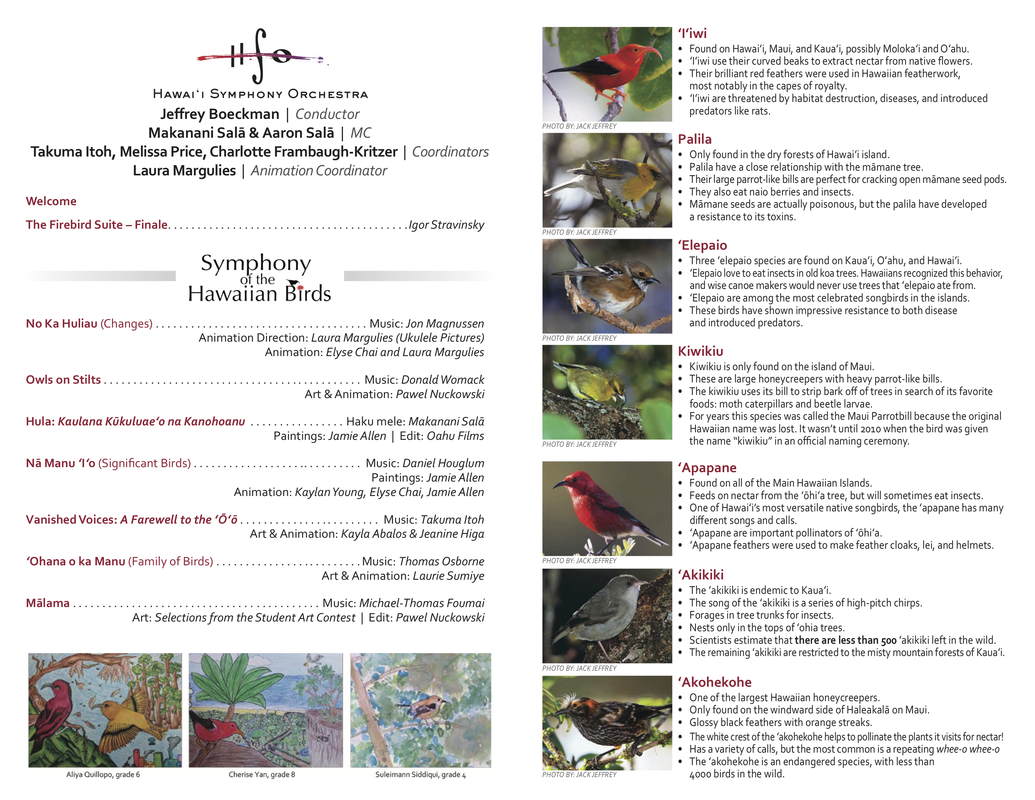|
Megan Laut is a Wildlife Biologist with the U.S. Fish and Wildlife Service and a primary scientific consultant for our project. She contributed vital knowledge to one of the performance's final compositions on Hawaiian forest bird conservation, spearheaded by artist Laurie Sumiye and composer Thomas Osbourne. Ms. Laut works with Kaua‘i forest birds such as the ‘akikiki and ‘akeke‘e, two critically endangered honeycreepers that are threatened by imminent extinction unless conservation actions are implemented. ‘Ākikiki, one of several critically endangered Kaua‘i forest birds in need of drastic conservation measures. (Photo by Jack Jeffrey) Tell us about yourself: where you’re from, how long you’ve lived in Hawai‘i, and where you work? I grew up in Delaware, moved to the Big Island in 1996 after graduate school, moved to Oahu in 2001, and have been working at the U.S. Fish and Wildlife Service for over 10 years. What are some of the major challenges faced by Hawai‘i’s native forest bird species? Hawaii’s forest birds face many of the same challenges, regardless of which island they are on. These include predation by non-native mammals, habitat loss and degradation, and mosquito-borne disease. Further, most people don’t get to see these birds because they occur in remote places. Because of this, many people aren’t familiar with them, or don’t relate to them like they might to, say, a mynah bird which isn’t native, but people see every day. Public awareness about these species is necessary for their conservation, and this is one of the reasons I’m so enamored with the Forest Bird Symphony Project. Children are learning about the birds in the classroom, but will also get to encounter them through a sensory experience, which provides the opportunity to relate to them at an emotional level. What role does the U.S. Fish and Wildlife Service play in local forest bird conservation efforts?
The Service works with a number of partners in a variety of ways to conserve Hawaii's forest birds. In addition to national wildlife refuges like Hakalau Forest that provide some of the last, best habitat for forest birds in Hawaii, we are engaged in a number of field projects with DOFAW, the San Diego Zoo, and others to restore habitat, provide support for captive breeding efforts for bird's like Kauai's ‘akikiki, combat invasive species like mosquitoes that spread avian pox and malaria, and find solutions to threats like rapid ‘ōhi‘a death. We are also responsible for developing recovery plans and identifying the actions that are needed to improve the status of the species. What are some of the important takeaway messages you would like to communicate through this performance? I would most like the audience to leave with an appreciation of the uniqueness and beauty of Hawaii’s forest birds. |
Melissa Price
|
Proudly powered by Weebly




 RSS Feed
RSS Feed